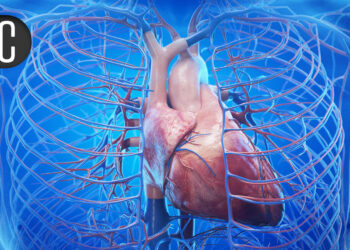
People with type 1 diabetes can’t produce enough insulin to regulate their blood sugar
Halfpoint Images/Getty Images
Researchers have 3D printed devices made of insulin-producing cells. These devices could enable a long-term treatment for type 1 diabetes that would let people produce their own insulin – without requiring invasive surgery.
Because people with type 1 diabetes cannot make enough insulin to regulate their blood sugar, they must constantly manage their condition, usually with injections and dietary precautions. One longer-term treatment involves transplanting human islets – clusters of insulin-producing cells that typically grow in the pancreas – from donors. But like an organ transplant, this requires invasive surgery.
“Current practice is to inject these human islets through the portal vein into the liver,” says Quentin Perrier at the Wake Forest Institute for Regenerative Medicine in North Carolina. However, about half of the implanted islets quickly lose their functionality, which means people must undergo several transplantations to make the treatment effective.
If islets could be placed directly under the skin, surgery would not only be less invasive, but it would also produce less of the stress and inflammation that shortens the cells’ functional life.
“The higher the density [of islets], the smaller the size of the device you would need to plant in the patient,” says Adam Feinberg at Carnegie Mellon University in Pennsylvania and the biotech company FluidForm Bio in Massachusetts.
To achieve that high density, Perrier and his colleagues 3D printed islets from a “bioink” made of human pancreatic tissue and alginate, a type of carbohydrate derived from seaweed. Live insulin-producing cells were mixed into this material.
“We put this bioink with the [human] islet into a syringe, and we print a special motif [with it],” says Perrier. This porous grid is designed to allow new blood vessels to grow around and through the structure.
In the lab, this technique “works very well”, says Perrier, noting that about 90 per cent of the islets’ cells survived and functioned for up to three weeks. “The next challenge is really to validate this finding in vivo.” Perrier and his colleagues presented their research at the European Society for Organ Transplantation (ESOT) 2025 meeting in London on 29 June.
Feinberg and his colleagues have also 3D printed their own islets. Their technique is to make a framework by printing cells and collagen directly into a hydrogel polymer – “kind of like 3D printing inside of hair gel”, he says. It was presented at the International Pancreas & Islet Transplant Association 2025 meeting in Pisa, Italy on 16 June. In diabetic lab mice, the islets restored normal glucose control for up to six months.
Feinberg says Perrier’s work is “definitely promising” but that the inherent variability of the human tissue used to make the islets could pose challenges in a living body. “It’s like getting a transplant organ,” he says. “On one side, the material may work better. On the flip side, it’s variable and hard to get, and that’s a really hard problem to solve.”
To avoid such transplantation issues, both Feinberg and Perrier say stem cell therapies represent the future of type 1 diabetes treatment. Using stem cells in the 3D printing process – instead of the cells they are currently using – could solve a lot of issues at once, they say.
Topics:
Source link : https://www.newscientist.com/article/2486233-3d-printing-could-enable-a-long-term-treatment-for-type-1-diabetes/?utm_campaign=RSS%7CNSNS&utm_source=NSNS&utm_medium=RSS&utm_content=home
Author :
Publish date : 2025-07-03 20:00:00
Copyright for syndicated content belongs to the linked Source.








